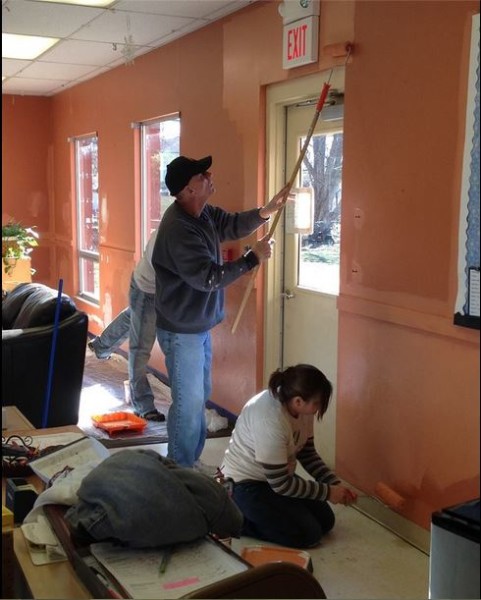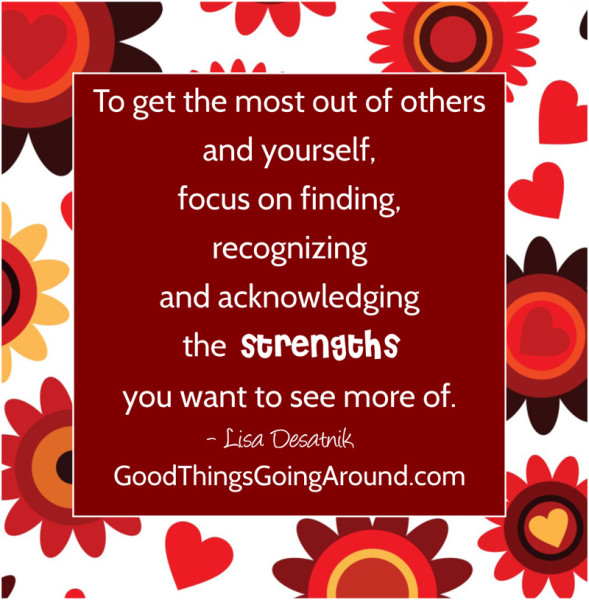Lisa Desatnik
Joey Votto Foundation Volunteers Spruce Up Learning Center
When you stop and think about how vital our children are to the future of our community, and how important it is that they have the tools they need to succeed – from an early age, you come to really appreciate the dedicated work of those who devote not just their careers, but their hearts too, to ensure new generations a starting point from which to grow.
Cincinnati Early Learning Centers, Inc. (CELC) is a nationally accredited, non-profit, United Way agency managing six childcare centers throughout Greater Cincinnati, each providing quality child care for children ages three months through eleven years. CELC sites include: Harrison (location of original site – 1980), East Walnut Hills (1983), East End (1995), Downtown/YWCA (2006), Clifton/Future Environments (2010) and The Robert and Adele Schiff Early Learning Center located in Oyler School, Lower Price Hill (2012).
More than 80 kids, ages 18 months to 12 years, attend its Harrison CELC center. With full-day educational programs for the toddlers and pre-schoolers and an after-school program for the older students, it understandably was in need of a fresh face lift.
Enter the Votto Foundation
Cincinnati Reds first baseman Joey Votto created The Joey Votto Foundation to support the healing of service members, veterans and military families affected by Post-Traumatic Stress Disorder. Each month the Foundation invites families to participate in a community volunteer project, providing opportunities for veterans and military families to socialize, network, and connect with each other. Its February project was to help the staff and children at the Harrison CELC enjoy a refreshed-looking center.
The experience gave Votto Foundation volunteers an opportunity to get involved with a project that brought out their inner humanity and fostered camaraderie, and the staff and kids of CELC were given a beautified environment in which to learn.
I’d say that’s a home run effort!
How Have You Made Someone’s Day?
Hospice Of Cincinnati Offers Pet Peace Of Mind
I have looked in the eyes of many gentle souls, and I have felt the love that so naturally passes through them to those within reach. Tina Bross, BS, LMT, supervisor of holistic services for nonprofit Hospice of Cincinnati, is among them.
On the bitterly cold day that we sat across the table from each, two people who had never met brought together by our shared passion for animals and for our desire to help others. (And by Wayne ‘Box’ Miller, manager of diversity and communication for Hospice who I’ve known for years.)
But Tina has this magical way of transforming strangers into friends very quickly. It is a beautiful gift, and one that makes her so well suited for her role at Hospice.
The people who are assisted by the organization are there to live out their final days in peace. They know there is no longer hope for one more year, one more season. It is their time to say their last good-byes on earth to those who shared love, laughter and even tears with them on their journey called life.
I think Hospice of Cincinnati is such a very special organization. It allows families to spend last days and minutes together in an environment where they can simply focus on being together. And Hospice gives people serenity to know it is okay to leave.
The program Tina oversees is one that is charged with tending to patient’s animals, providing loving care for them and working to find forever homes for pets when family members are not available.
Pet Peace of Mind
Pet Peace of Mind was begun in 2007 by a hospice chaplain who also happened to be a vet, and by 2009, with financial support from the Banfield Charitable Trust, the program went national. Tina immediate sought approval from her board to bring it to our area.
In the beginning she sent out surveys to help determine the types of services they would provide, but what Tina hadn’t expected was some of the unforgettable responses that were returned with the questionnaires.
“Helping my patients with their pet related issues is the most heart-wrenching part of my job,” a nurse wrote on one. They are words that have been permanently etched in Tina’s mind.
I could see tears welling in the corners of her eyes as she spoke to me.
“People have such strong bonds with their pets. Many of the people in our care are older and their pets are their family and their comfort,” Tina said.
Meet Lucy
Lucy’s caregiver was a single man whose life revolved around her. It was a year after he brought her  into his home that he was diagnosed with terminal cancer. “He told me he only cried two times and that was when he was thinking about her,” said Tina. “I told him, ‘I want you to know we will find Lucy a good home.’”
into his home that he was diagnosed with terminal cancer. “He told me he only cried two times and that was when he was thinking about her,” said Tina. “I told him, ‘I want you to know we will find Lucy a good home.’”
After his death, Tina kept her word. She and her team found a foster family for Lucy and ultimately a loving family with two little boys where she will spend the rest of her days.
“I wish I could tell him, ‘She’s good!’,” Tina told me, her words difficult to say.
I somehow have a feeling he knows.
More about Pet Peace of Mind
The Pet Peace of Mind® program assists Hospice of Cincinnati patients and families with care and feeding of their beloved pets. Pet Peace of Mind offers helping hands through volunteers and pet-related financial assistance.
Services include:
In home help with routine pet-related chores like feeding and walking
temporary boarding or foster
transporting pets for vet or grooming appointments
delivery of supplies like food and litter
permanent placement of the pet if necessary
emotional support
How can you help?
Volunteer
Donate
Make Today Your Masterpiece
Benefits For Leadership Of Focusing On Strengths
I recently attended a Cincinnati Business Courier BizWomen breakfast (a fabulous networking event) where we were given as a table a number of discussion topics. One of them went something like this…
”If you could choose between being supported in one of the following ways, which would you choose?” The choices were something like a.) flexible hours b.) more financial security and another choice that I don’t remember. But, what immediately stood out to me was what was missing in that list.
What was that extra choice? Feeling valued.
Yes, in this world of tough economic times and business downsizing, when employees often talk of just being  fortunate to have a job that pays their bills, my answer is still ‘feeling valued.’
fortunate to have a job that pays their bills, my answer is still ‘feeling valued.’
A Lesson In Leadership With Positive Reinforcement
Leaders should take notice. It is in environments where our strengths and positive outcomes are genuinely noticed and encouraged where we do our best work; where we tend to work above and beyond the expectations set forth for us; where we feel the greatest loyalty and passion; and where our gifts shine with brilliance.
I have studied this in behavior science for many years as it relates to positive animal training; however, I have experienced and practiced this throughout my career and my life also.
When I look back at my career highlights and the projects for which I accomplished huge outcomes, even winning regional awards, the common thread among them was that I was working for people who believed in me, who made me feel appreciated for my contributions, and who trusted and supported me to do my best work. Those also tended to be the organizations with which I enjoyed long term relationships.
On the flip side, I have seen animals I train go from being ‘stubborn’ or ‘dumb’ to great brilliance in a matter of minutes when I teach using positive reinforcement. When I focus on finding their strengths, I have seen people I teach, manage or mentor through my pet training, PR work and personal life want to work harder and become better…and generally do.
According to Dr. Barbara Frederickson, a leading scholar in the area of positive psychology, a ratio of positive to negative emotions above three to one serves as a tipping point that determine your odds of languishing or flourishing. In other words, catching people doing something right should occur three times (or more) frequently than catching people doing something wrong.
Equally important is reinforcing those ‘good’ choices and behaviors as soon after they are made, the better. Providing reinforcement only when asked for feedback or only during periodic reviews is not enough. Scientifically speaking, this is known as contiguity. It refers to the closeness in time between the consequence and the behavior. The less lag time, the more the learner can build that relationship between the valuable reinforcer and the behavior.
What are some of the key benefits to all of this?
Well, your employees or those around you will grow in self-confidence with an eagerness to learn and perform. They will be more creative, cooperative and open to change. They will excel. And they will have greater commitment and loyalty to you (and your organization) as they associate those positive outcomes with you.
 On the flip side, in an environment where we are not made to feel valued, we will tend to only work to the level we need to, to avoid negative consequences; we won’t have that sense of greater commitment; and we won’t experience that passion or love of learning.
On the flip side, in an environment where we are not made to feel valued, we will tend to only work to the level we need to, to avoid negative consequences; we won’t have that sense of greater commitment; and we won’t experience that passion or love of learning.
Here is my take-a-way challenge for you: Make a conscious effort to focus on the strengths of those around you (AND yourself), to encourage them, and provide positive feedback. When you do, you’ll be amazed to find so much potential right there in front of you.
To read more about the benefits of using positive reinforcement in your work environment, read Lisa Sansom’s blog post at this link.

















